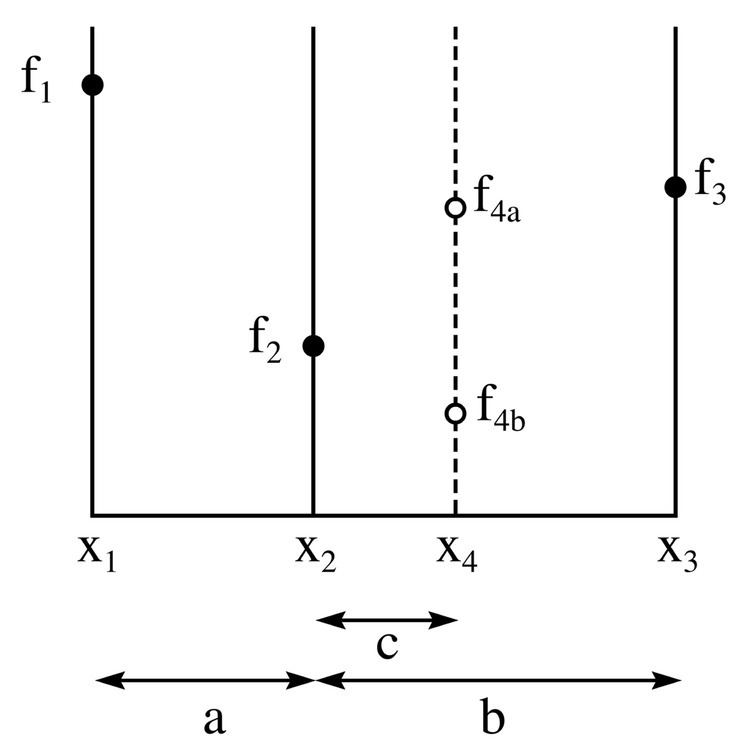 | ||
The golden-section search is a technique for finding the extremum (minimum or maximum) of a strictly unimodal function by successively narrowing the range of values inside which the extremum is known to exist. The technique derives its name from the fact that the algorithm maintains the function values for triples of points whose distances form a golden ratio. The algorithm is the limit of Fibonacci search (also described below) for a large number of function evaluations. Fibonacci search and golden-section search were discovered by Kiefer (1953) (see also Avriel and Wilde (1966)).
Contents
Basic idea
The discussion here is posed in terms of searching for a minimum (searching for a maximum is similar) of a unimodal function. Unlike finding a zero, where two function evaluations with opposite sign are sufficient to bracket a root, when searching for a minimum, three values are necessary. The golden-section search is an efficient way to reduce progressively the interval locating the minimum. The key is to observe that regardless of how many points have been evaluated, the minimum lies within the interval defined by the two points adjacent to the point with the least value so far evaluated.
The diagram above illustrates a single step in the technique for finding a minimum. The functional values of
The next step in the minimization process is to "probe" the function by evaluating it at a new value of x, namely
Probe point selection
From the diagram above, it is seen that the new search interval will be either between
However, there still remains the question of where
Mathematically, to ensure that the spacing after evaluating
However, if
Eliminating c from these two simultaneous equations yields
or
where φ is the golden ratio:
The appearance of the golden ratio in the proportional spacing of the evaluation points is how this search algorithm gets its name.
Termination condition
Because smooth functions are flat (their first derivative is close to zero) near a minimum, attention must be paid not to expect too great an accuracy in locating the minimum. The termination condition provided in the book Numerical Recipes in C is based on testing the gaps among
where
Iterative algorithm
Recursive algorithm
To realise the advantage of golden section search, the function goldenSectionSearch(..) above, except the first,
Fibonacci search
A very similar algorithm can also be used to find the extremum (minimum or maximum) of a sequence of values that has a single local minimum or local maximum. In order to approximate the probe positions of golden section search while probing only integer sequence indices, the variant of the algorithm for this case typically maintains a bracketing of the solution in which the length of the bracketed interval is a Fibonacci number. For this reason, the sequence variant of golden section search is often called Fibonacci search.
Fibonacci search was first devised by Kiefer (1953) as a minimax search for the maximum (minimum) of a unimodal function in an interval.
